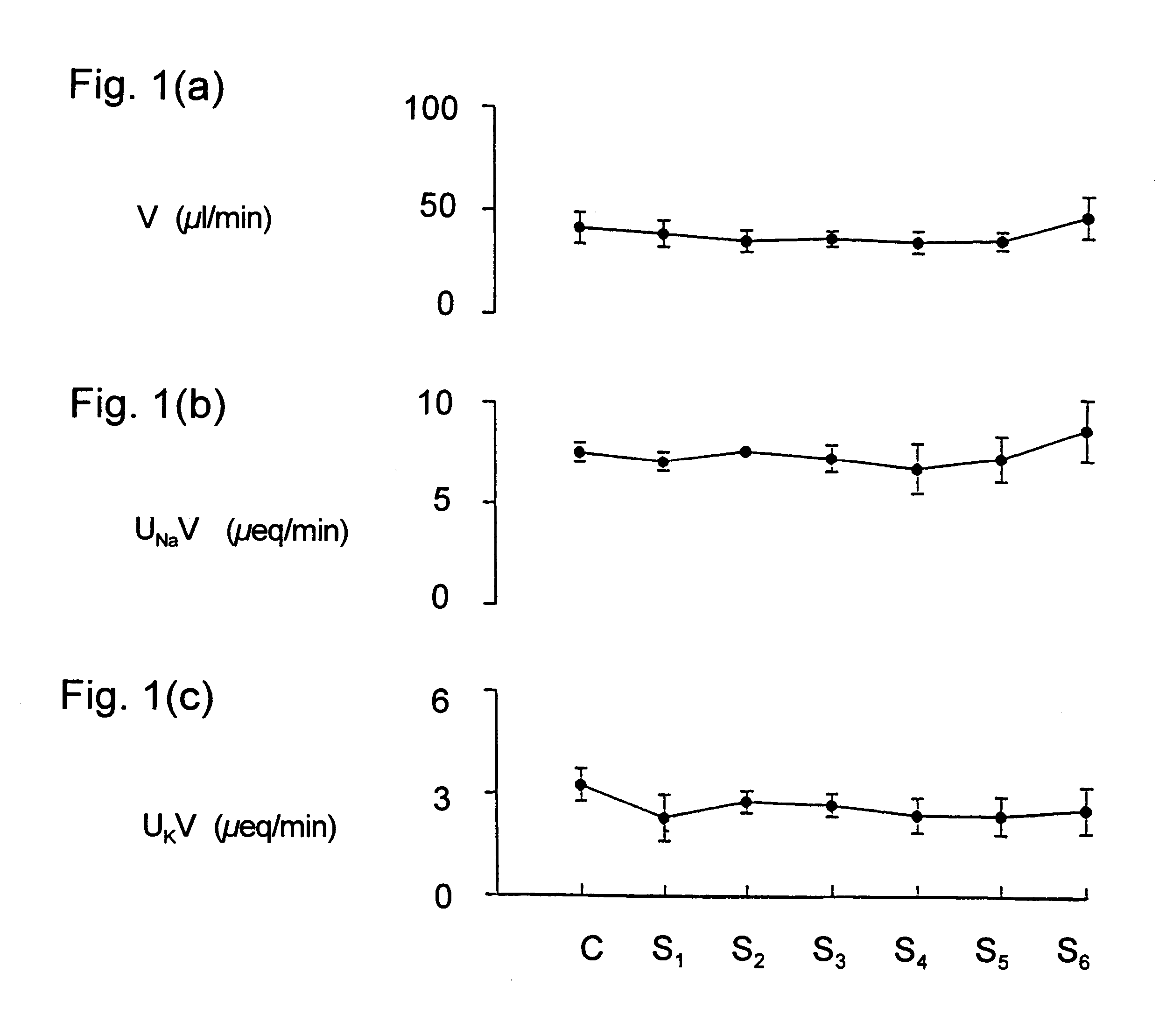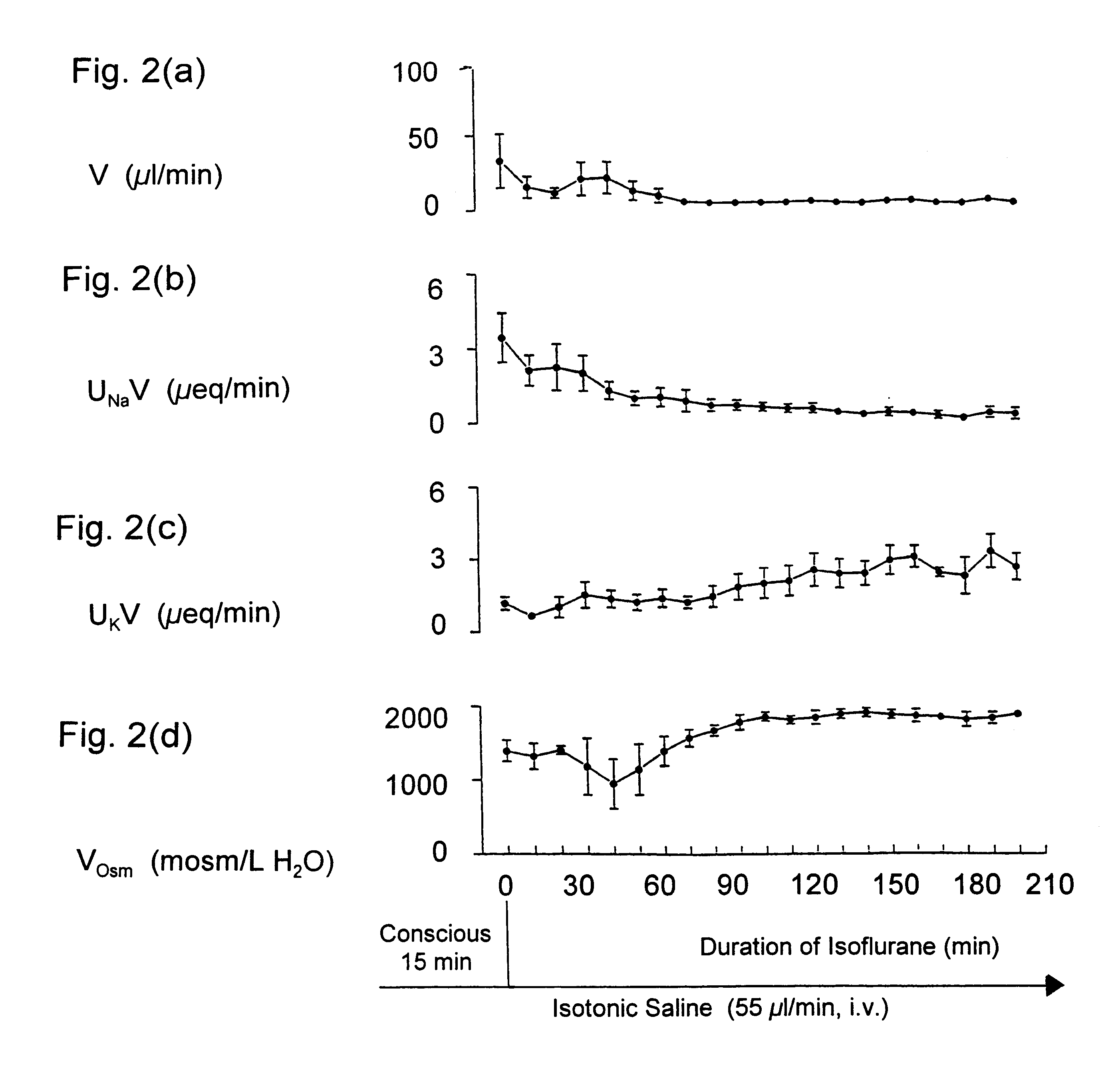Maintaining kidney function during surgery or trauma
- Summary
- Abstract
- Description
- Claims
- Application Information
AI Technical Summary
Benefits of technology
Problems solved by technology
Method used
Image
Examples
Embodiment Construction
FIGS. 1(a), 1(b), and 1(c) depict the levels of urine flow rate (V), urinary sodium excretion (U.sub.Na V), and urinary potassium excretion (U.sub.K V), respectively, that were observed in conscious Sprague-Dawley rats (n=5) under the following experimental conditions: cannula were implanted into the femoral artery and vein the day before surgery; a bladder catheter was implanted under methohexital (a short-acting barbiturate) anesthesia the day of the experiment, and rats were allowed to regain consciousness; all rats received an intravenous infusion of isotonic saline at a rate of 55 .mu.l / minute during consecutive 10 minute urine collection periods, both during a control period (C) and for the duration of the study (periods S1-S6). During the control period (C), the levels of urine flow rate, urinary sodium excretion, and urinary potassium excretion were 42.+-.7 .mu.l / min, 7.6.+-.0.5 .mu.Eq / min, and 3.3.+-.0.5 .mu.Eq / min, respectively. As shown, urine flow rate, urinary sodium ex...
PUM
| Property | Measurement | Unit |
|---|---|---|
| Flow rate | aaaaa | aaaaa |
| Concentration | aaaaa | aaaaa |
| Osmolality | aaaaa | aaaaa |
Abstract
Description
Claims
Application Information
 Login to View More
Login to View More - R&D
- Intellectual Property
- Life Sciences
- Materials
- Tech Scout
- Unparalleled Data Quality
- Higher Quality Content
- 60% Fewer Hallucinations
Browse by: Latest US Patents, China's latest patents, Technical Efficacy Thesaurus, Application Domain, Technology Topic, Popular Technical Reports.
© 2025 PatSnap. All rights reserved.Legal|Privacy policy|Modern Slavery Act Transparency Statement|Sitemap|About US| Contact US: help@patsnap.com



